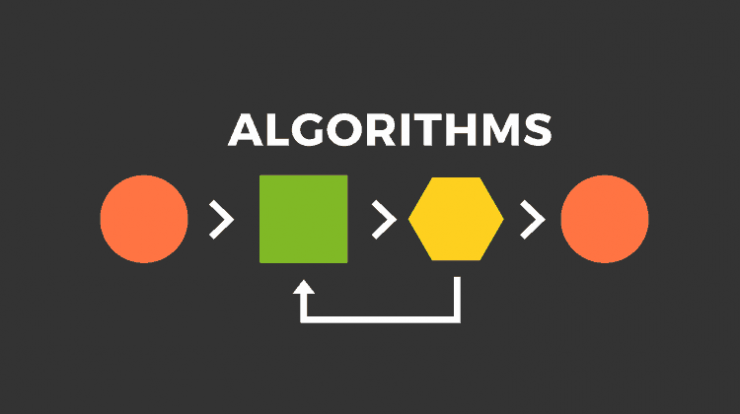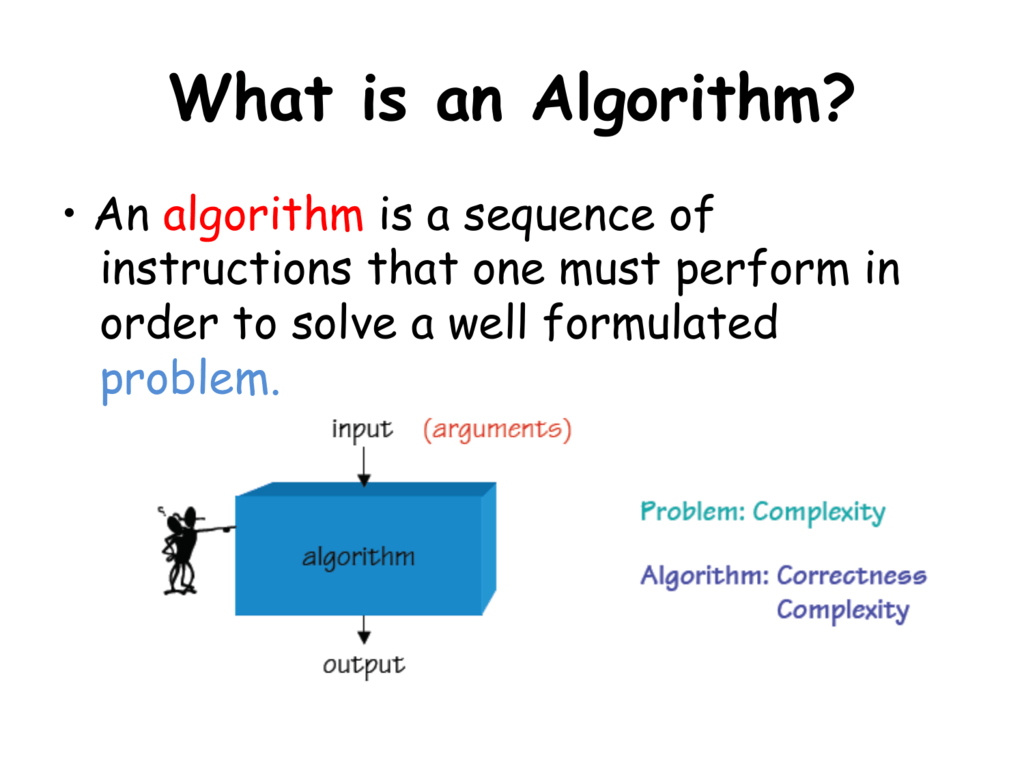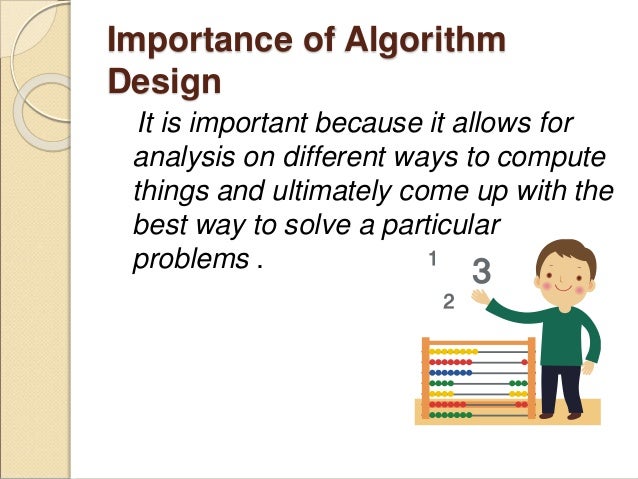
We all know that In Today’s world there is lots of software running in the market, But do you ever think how they work. there are many things behind that Software like Data Structures, algorithms, codes, etc. In this tutorial we are going to learn about Algorithm. If you don’t have any knowledge about Data Structures then go to my previous tutorial in which i have shared many things about what is Data Structures, why we use and some more things. Please click on this link to know about Data Structures. So let’s start with Algorithm.
What is Algorithm?

The word algorithm means “A procedure or a set of rules to be observed during computation or other issue solving activities”. This is why algorithm refers to a set of rules/instructions which determine step by step how a work is to be performed to get the intended outcomes.
Algorithmic programming consists of a set of rules to teach the computer how to do a task. In essence, a computer program is an algorithm which informs the computer in what particular sequence particular steps to run in order to perform a certain task. Depending on the programming language used, algorithms are written using a special syntax.
Which are the Types of Algorithm?

Algorithms are categorized according to the ideas used to do a job. Although there are numerous sorts of algorithms, the key categories of IT algorithms include:
- Divide and conquer algorithms :- Divide the issue into smaller sub-issues of the same type; solve smaller issues and integrate the original problem solving answers.
- Brute force algorithms :- Try every potential solution until the solution is found satisfactory.
- Randomized algorithms :- To find a solution to the problem, employ a random integer for at least once throughout a calculation.
- Greedy algorithms :- Finish at local level an ideal solution to discover the ideal answer to the complete issue.
- Recursive algorithms :- Address the lowest and easiest form of an issue and solve it in a wider and broader way until the original problem has been resolved.
- Backtracking algorithms :- Divide the issue into sub-problems that can be resolved, but if the requested answer is not attained, reverse the problem until a route pushes it forward is established.
- Dynamic programming algorithms :- Pause a difficult problem and solve them once only, instead of re-calculating their answers, by collecting smaller subproblems and saving their solutions for future use.
What are the Characteristics of Algorithm?

- Clear and Unambiguous:- Clear and unambiguous should be the algorithm. Every step should be obvious and solely meaningful in all respects.
- Well-Defined Inputs:- When an algorithm tells you to take inputs, the inputs should be adequately specified.
- Well-Defined Outputs:– The algorithm must be finite, i.e. not terminate in endless or similar loops.
- Feasible:- The method must be straightforward, general and practical so that the available resources may be implemented. No future technology or anything must be included.
- Language Independent:– The developed algorithm has to be language-independent, i.e. it has to be straightforward guidelines which may be implemented in any language, however the outcome is same.
What is Sorting Algorithms?
A sorting algorithm is an algorithm that lists items, generally in number or lexicographical order, in a specified order. The first stage in algorithms which address more complicated issues frequently involves sorting. Many sorting algorithms exist, each of which has its own advantages and downsides. Below, some of the most notable sorting algorithms will be discussed.

- Linear sort:- Find the smallest element in the sorted list, transfer it to a new list, then delete it from the original. Rep until the original list is depleted.
- Bubble sort:- Compare the first two items in the list and swap them if the first is greater than the second. This should be done for each pair of neighbor entries in the list. Then go through the procedure again until the list is completely sorted.
- Insertion sort:- Each entry in the list is compared to all previous entries until a smaller element is discovered. Change the order of these two items. Carry on in this manner until the list is completely sorted.
Why are Algorithms Important?

Many disciplines need algorithmic thinking, or the ability to outline unambiguous procedures to solve a problem. We employ algorithms and algorithmic thinking all the time, even if we aren’t aware of it. Students can use algorithmic thinking to break down issues and construct solutions in distinct phases. Students must use organized thinking and reasoning abilities in order to grasp and apply an algorithm.

What are the Advantages of Algorithms?
There are few Advantages of Algorithms which I have shared that in following points:-
- It is an easy-to-understand step-by-step illustration of a solution to a particular problem.
- Definite procedure is used in an algorithm.
- It is not dependent on any programming language, thus it is simple to grasp even if you don’t know how to program.
- An algorithm can be easily debugged since each step has its own logical sequence.
- The problem is broken down into smaller chunks or stages using algorithms, making it easier for programmers to translate it into a working program.
What are the Disadvantages of Algorithms?
There are few Disadvantages of Algorithms which I have shared that in following points:-
- Algorithms take more time to apply on.
- An algorithm is not a computer program; rather, it is a notion that describes how a program should be written.
- Big Programs are difficult to add in Algorithmic way.
- Complex logic may be quite difficult to understand using algorithms.
- In algorithms it is hard to display branching and looping statements.
How Algorithms are Used or Works?
Algorithms are usually developed as functions in computer programming. These functions can be referred by a large application as mini programmes. An image viewing program, for example, can have a library of functions that each employ an own image file format algorithm. The program of picture editing may include picture data processing algorithms. Examples are cropping, scaling, sharpening, blurring, red eye removal and colour improvement for the image processing methods.
In many circumstances, a certain operation within a software programmer can be conducted through several means. Programmers are therefore often looking for the highest possible efficiency techniques. Developers may guarantee that their applications execute as quickly as possible using highly-efficient techniques and consume minimum system resources. Naturally, the first time not all algorithms are constructed completely. Developers so often enhance current algorithms and integrate them in future software releases. The new version is more likely to feature more efficient algorithms, when you view a new edition of a software application that is either “optimized” or has “faster performance.”
Some Examples of Algorithms:
Example 1:- Timer – a class that uses microtime() to provide easy calculation of elapsed times
| <?php | |
| class c_Timer { | |
| var $t_start = 0; | |
| var $t_stop = 0; | |
| var $t_elapsed = 0; | |
| function start() { $this->t_start = microtime(); } | |
| function stop() { $this->t_stop = microtime(); } | |
| function elapsed() { | |
| if ($this->t_elapsed) { | |
| return $this->t_elapsed; | |
| } else { | |
| $start_u = substr($this->t_start,0,10); | |
| $start_s = substr($this->t_start,11,10); | |
| $stop_u = substr($this->t_stop,0,10); | |
| $stop_s = substr($this->t_stop,11,10); | |
| $start_total = doubleval($start_u) + $start_s; | |
| $stop_total = doubleval($stop_u) + $stop_s; | |
| $this->t_elapsed = $stop_total - $start_total; | |
| return $this->t_elapsed; | |
| } | |
| } | |
| }; | |
| /* Here's an example usage: | |
| $timer = new c_Timer; | |
| $timer->start(); | |
| echo "<hr>"; | |
| $timer->stop(); | |
| echo $timer->elapsed(); | |
| */ | |
| ?> |
Example 2:- A class to put get and post variables in hidden form.
| <?php | |
| class c_HiddenVars { | |
| function display($a) { | |
| $c = Count($a); | |
| for ($i = 0, Reset($a); $i < $c; $i++, Next($a)) { | |
| $k = Key($a); $v = $a[$k]; | |
| if (is_array($v)) { | |
| $vc = Count($v); | |
| for (Reset($v), $vi = 0; $vi < $vc; $vi++, Next($v)) { | |
| $vk = Key($v); | |
| echo "<input type=hidden name=\"$k\[$vk\]\" value=\"".htmlspecialchars($v | |
| [$vk]). "\">\n"; | |
| } | |
| } else { | |
| echo "<input type=hidden name=\"$k\" value=\"".htmlspecialchars($v). "\">\n"; | |
| } | |
| } | |
| } | |
| function get() { | |
| global $HTTP_GET_VARS; | |
| if (is_array($HTTP_GET_VARS)) { $this->display | |
| ($HTTP_GET_VARS); } | |
| } | |
| function post() { | |
| global $HTTP_POST_VARS; | |
| if (is_array($HTTP_POST_VARS)) { $this->display | |
| ($HTTP_POST_VARS); } | |
| } | |
| function all() { | |
| $this->get(); | |
| $this->post(); | |
| } | |
| }; | |
| ?> |
Conclusion:-
This article shows the complete information and introduction about the Algorithms. What is Algorithms, what are the types, how it is used and few ore things which is very important to know about Algorithms. Algorithm is a very big topic and very difficult to understand and many problem were came if you don’t know the basic concept of Algorithms. I hope this article is helpful for you, all the things which I have mention that is my real experience which I have faced during my learning period so I thought I have to share my experience. Hoping this one is helpful for you.

👤 About the Author
Ashwani is passionate about DevOps, DevSecOps, SRE, MLOps, and AiOps, with a strong drive to simplify and scale modern IT operations. Through continuous learning and sharing, Ashwani helps organizations and engineers adopt best practices for automation, security, reliability, and AI-driven operations.
🌐 Connect & Follow:
- Website: WizBrand.com
- Facebook: facebook.com/DevOpsSchool
- X (Twitter): x.com/DevOpsSchools
- LinkedIn: linkedin.com/company/devopsschool
- YouTube: youtube.com/@TheDevOpsSchool
- Instagram: instagram.com/devopsschool
- Quora: devopsschool.quora.com
- Email– contact@devopsschool.com

